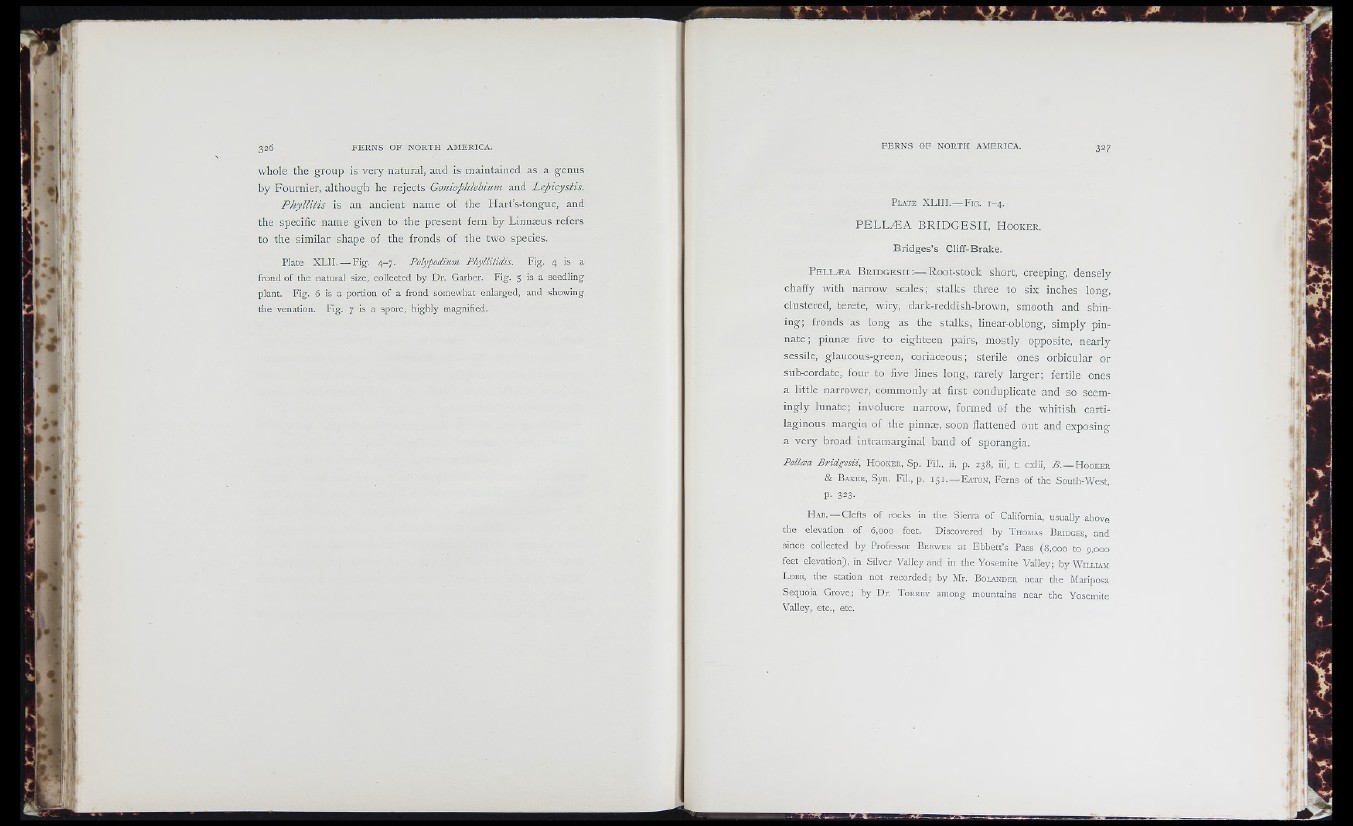
I
jk
k
I».
I»
»
* »
ll
!,
m |.i
whole the group is very natural, and is maintained as a genus
by Fournier, although he rejects Goniophlebitim and Lepicystis.
Phyllitis is an ancient name of the Hart's-tongue, and
the specific name given to the present fern by Linnæus refers
to the similar shape of the fronds of the two species.
Plate X L I I. — Fig. 4-7. Polypodium Phyllitidis. Fig. 4 is a
frond of the natural size, collected by Dr. Garber. Fig. 5 is a seedling
plant. Fig. 6 is a portion of a frond somewhat enlarged, and showing
the venation. Fig. 7 is a spore, highly magnified.
P l a t e X L I I I .— F ig . 1 - 4 .
P E L LÆ A B R ID G E S I I , H o o k e r .
B r id g e s ’ s C liff-B ra k e .
P e l l æ a B r i d g e s i i :— Root-stock short, creeping, densely
chaffy with narrow scales; stalks three to six inches long,
clustered, terete, wiry, dark-reddish-brown, smooth and shining;
fronds as long as the stalks, linear-oblong, simply pinnate;
pinnæ five to eighteen pairs, mostly opposite, nearly
sessile, glaucous-green, coriaceous; sterile ones orbicular or
sub-cordate, four to five lines long, rarely larger; fertile ones
a little narrower, commonly at first conduplicate and so seemingly
lunate; involucre narrow, formed of the whitish cartilaginous
margin of the pinnæ, soon flattened out and exposing
a very broad intramarginal band of sporangia.
Pdlma B ridgesii, H o o k e r , Sp. Fil., ii, p. 238, iii, t. cxiii, i?. — H o o k e r
& B a k e r , Syn. Fil., p. 1 5 1 .— E a to n , Ferns of the South-West,
P- 323-
H a b .— Clefts of rocks in the Sierra of California, usually above
the elevation of 6,000 feet. Discovered by T homas B r id g e s , and
since collected by Professor B r ew e r at Ebbett’s Pass (8,000 to 9,000
feet elevation), in Silver Valley and in the Yosemite Valley; by W il l ia m
L obb , the station not recorded; by Mr. B o la n d e r near the Mariposa
Sequoia Grove; by Dr. T o r r e y among mountains near the Yosemite
Valley, etc., etc.